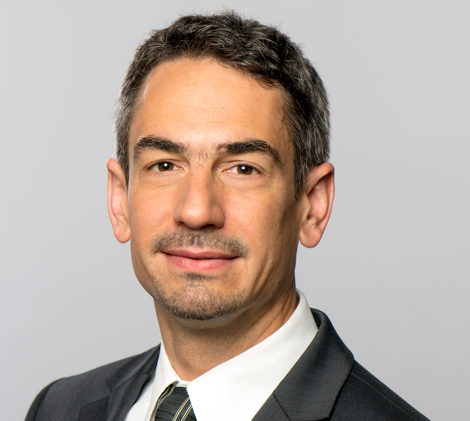


Charge and exciton transport in nanoscale molecular materials are important processes underlying the working principle of, e.g., organic transistors and solar cells. Their theoretical description is challenging because they require us to go beyond the Born Oppenheimer approximation. Simple rate based approaches, e.g. Marcus or Forster, are often used but they are based on many assumptions that often do not apply. Explicit quantum dynamical propagation schemes exist [1 3] but they tend to become computationally very demanding or unfeasible as one approaches truly nanoscale system sizes. Our group has recently developed a very efficient non adiabatic molecular dynamics method that fills this gap, termed fragment orbital based surface hopping (FOB SH), which I will present in my talk[4
7]. This method enables us to simulate charge and exciton transport of truly nanoscale systems at atomic resolution (> 10 nm, ~100,000 atoms). Applications of FOB SH to charge carrier transport in organic single crystals gave compelling new insight into the nature and transport mechanism of the charge carriers in these materials: they form ``flickering" polarons , objects that are ``half way” between waves and particles, delocalized over up to about 20 molecules in some of the most conductive molecular materials to date (see Figure below for rubrene )[8 9]. Our method also affords the simulation of disordered systems, allowing us to study the impact of structural disorder (defects, dislocations, grain boundaries) on the quantum mechanical propagation of the charge carrier.[10] Recent extension of the method to Frenkel exciton transport shows that the latter tend to be more localized than charges in organic crystals, even in the latest non fullerene acceptor materials with record exciton diffusion constants, owing to the larger reorganization energy (diagonal electron phonon coupling) for electronic excitation compared to electron removal [11]. I will close with a brief outline of current extensions of FOB SH to exciton dissociation at nano scale donor acceptor interfaces, which will bring us a step closer to simulating charge generation and recombination in realistic models of excitonic solar cells.
Jochen Blumberger is Professor of Chemical Physics at University College London, UK, and Co Director of the Thomas Young Centre, the London Centre for the Theory and Simulation of Materials. He obtained his PhD from University of Cambridge (2005) and received a Royal Society University Research Fellowship (2006 14) and a Hans Fischer Fellowship from the Institute of Advanced Study, Technical University Munich (2016 18). He was elected Fellow of the Royal Society of Chemistry in 2019. He currently directs a research group, funded by a ERC consolidator grant, with focus on the development and application of atomistic computer simulation methods relevant to energy conversion.
For more information, please visit:
https://www.thomasyoungcentre.org/people/78/professor-jochen-blumberger/



Charge and exciton transport in nanoscale molecular materials are important processes underlying the working principle of, e.g., organic transistors and solar cells. Their theoretical description is challenging because they require us to go beyond the Born Oppenheimer approximation. Simple rate based approaches, e.g. Marcus or Forster, are often used but they are based on many assumptions that often do not apply. Explicit quantum dynamical propagation schemes exist [1 3] but they tend to become computationally very demanding or unfeasible as one approaches truly nanoscale system sizes. Our group has recently developed a very efficient non adiabatic molecular dynamics method that fills this gap, termed fragment orbital based surface hopping (FOB SH), which I will present in my talk[4
7]. This method enables us to simulate charge and exciton transport of truly nanoscale systems at atomic resolution (> 10 nm, ~100,000 atoms). Applications of FOB SH to charge carrier transport in organic single crystals gave compelling new insight into the nature and transport mechanism of the charge carriers in these materials: they form ``flickering" polarons , objects that are ``half way” between waves and particles, delocalized over up to about 20 molecules in some of the most conductive molecular materials to date (see Figure below for rubrene )[8 9]. Our method also affords the simulation of disordered systems, allowing us to study the impact of structural disorder (defects, dislocations, grain boundaries) on the quantum mechanical propagation of the charge carrier.[10] Recent extension of the method to Frenkel exciton transport shows that the latter tend to be more localized than charges in organic crystals, even in the latest non fullerene acceptor materials with record exciton diffusion constants, owing to the larger reorganization energy (diagonal electron phonon coupling) for electronic excitation compared to electron removal [11]. I will close with a brief outline of current extensions of FOB SH to exciton dissociation at nano scale donor acceptor interfaces, which will bring us a step closer to simulating charge generation and recombination in realistic models of excitonic solar cells.
Jochen Blumberger is Professor of Chemical Physics at University College London, UK, and Co Director of the Thomas Young Centre, the London Centre for the Theory and Simulation of Materials. He obtained his PhD from University of Cambridge (2005) and received a Royal Society University Research Fellowship (2006 14) and a Hans Fischer Fellowship from the Institute of Advanced Study, Technical University Munich (2016 18). He was elected Fellow of the Royal Society of Chemistry in 2019. He currently directs a research group, funded by a ERC consolidator grant, with focus on the development and application of atomistic computer simulation methods relevant to energy conversion.
For more information, please visit:
https://www.thomasyoungcentre.org/people/78/professor-jochen-blumberger/